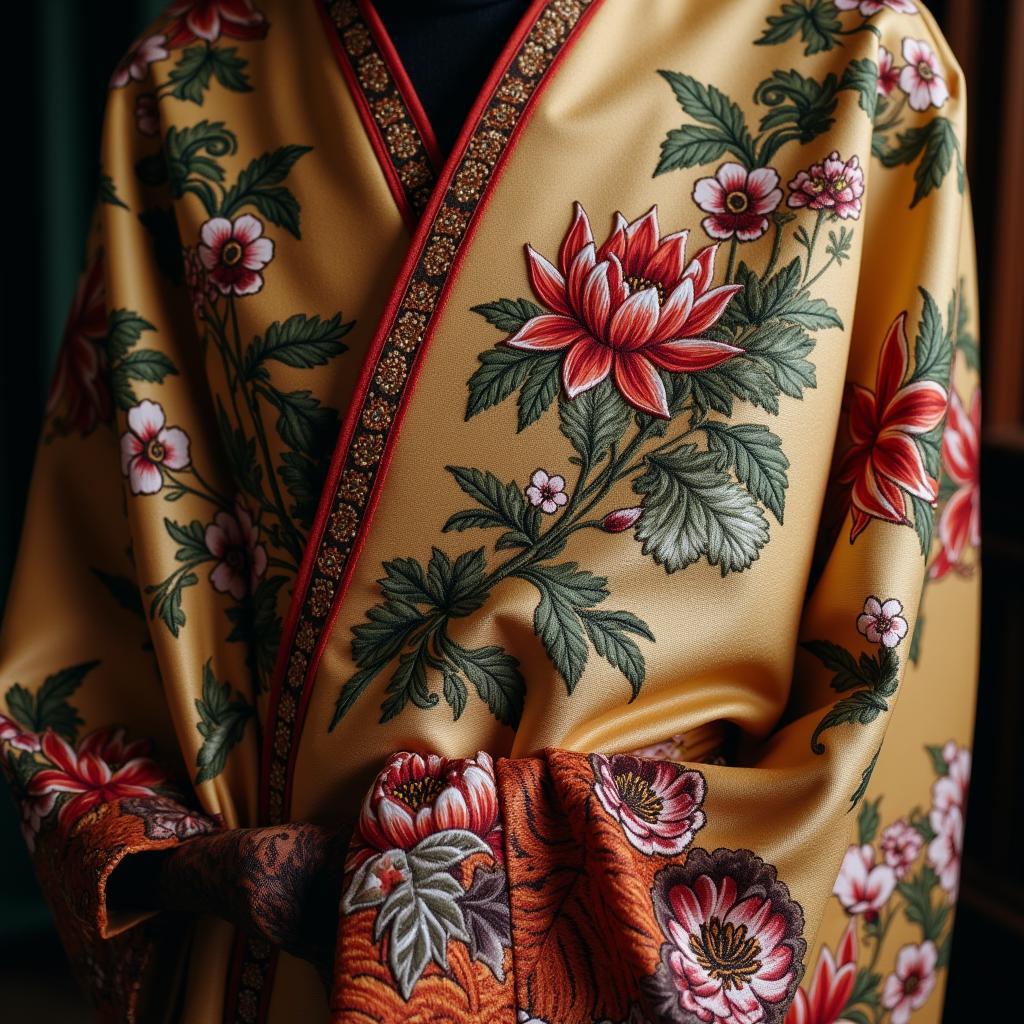Art Nouveau Dining Table: A Guide to Elegance and Nature-Inspired Design
The Art Nouveau Dining Table is more than just a place to eat; it’s a statement piece that brings the beauty of nature and the elegance of the Art Nouveau movement into your home. This style, flourishing between 1890 and 1910, is characterized by its flowing lines, organic shapes, and intricate details inspired by the natural world. From the gentle curves of a table leg to the stylized floral motifs adorning the tabletop, an art nouveau dining table is a testament to artistry and craftsmanship.
Choosing the perfect art nouveau dining table involves understanding its key characteristics, considering the materials and construction, and ensuring it complements your existing dining room decor. Whether you’re a seasoned antique collector or simply looking to add a touch of artistic flair to your home, this guide will provide valuable insights into selecting and incorporating an art nouveau dining table into your dining space. You might also consider complementary pieces, such as arts crafts dinnerware.
Key Characteristics of an Art Nouveau Dining Table
Art Nouveau embraces the natural world, drawing inspiration from flowers, plants, insects, and the female form. These influences are evident in the sinuous lines, asymmetrical shapes, and decorative elements found in art nouveau furniture. Look for pieces that incorporate these features:
- Curved Lines: Gentle, flowing lines that mimic the growth patterns of plants and create a sense of movement.
- Organic Shapes: Tables that avoid sharp angles and straight lines, opting for rounded edges and naturalistic forms.
- Floral and Foliage Motifs: Intricate carvings or inlays depicting stylized flowers, leaves, vines, and other botanical elements.
- Use of Natural Materials: Art Nouveau often features wood, glass, and metal, emphasizing the beauty of natural materials.
Materials and Construction of Art Nouveau Dining Tables
The materials used in crafting an art nouveau dining table contribute significantly to its overall aesthetic and durability. Understanding the different options available can help you choose a piece that suits your needs and preferences.
- Wood: Common choices include mahogany, walnut, and oak, often polished to a high sheen to showcase the natural grain.
- Glass: Stained or etched glass can be incorporated into tabletops or decorative panels, adding a touch of color and artistry. You may also appreciate the aesthetic of glass art fish.
- Metal: Wrought iron or brass can be used for table bases and decorative accents, adding a touch of elegance and durability.
Integrating an Art Nouveau Dining Table into Your Dining Room
Harmoniously integrating an art nouveau dining table into your dining room requires careful consideration of your existing decor. Here’s how to create a cohesive and visually appealing space:
- Complementary Furniture: Choose dining chairs and other furniture pieces that complement the style of your table. Consider pieces with similar lines and materials, or opt for contrasting styles that create a balanced and eclectic look. Perhaps an art deco french furniture table would be a good fit.
- Wall Treatments: Consider incorporating art nouveau wallpaper peel and stick to enhance the Art Nouveau theme. Alternatively, choose paint colors that complement the wood tones and decorative elements of your table.
- Lighting: Select lighting fixtures that reflect the Art Nouveau aesthetic, such as chandeliers with flowing lines and floral motifs.
 Art Nouveau Dining Room Setting with Table and Chairs
Art Nouveau Dining Room Setting with Table and Chairs
What are some common motifs found on an art nouveau dining table?
Common motifs include stylized flowers, leaves, vines, insects, and the female form, reflecting the Art Nouveau movement’s emphasis on nature and organic forms.
What wood types are typically used in art nouveau dining tables?
Mahogany, walnut, and oak are popular choices, often polished to a high sheen to showcase their natural beauty. A similar aesthetic can be found in arts crafts dining room table.
“The beauty of an Art Nouveau dining table lies in its ability to transform a simple meal into a celebration of art and nature,” says renowned interior designer, Vivienne Beaumont. “It’s a piece that invites conversation and admiration.”
“When selecting an Art Nouveau dining table, look for pieces that resonate with your personal style and complement the overall aesthetic of your home,” adds antique furniture expert, Charles Dubois. “Each piece tells a story, and choosing the right one can add a touch of history and artistry to your dining space.”
In conclusion, an art nouveau dining table is a remarkable investment that brings elegance and natural beauty to your dining room. By understanding the key characteristics, materials, and design principles of this style, you can choose a piece that perfectly complements your home and reflects your unique taste. An art nouveau dining table is more than just furniture; it’s a work of art that will be cherished for generations to come.
FAQ
- What is the typical price range for an art nouveau dining table?
- Where can I find authentic art nouveau dining tables for sale?
- How do I care for and maintain an art nouveau dining table?
- What are some alternative dining table styles similar to Art Nouveau?
- Can I incorporate an art nouveau dining table into a modern home decor?
- What are some recommended resources for learning more about Art Nouveau furniture?
- Are there any contemporary artists or designers creating Art Nouveau-inspired furniture?
For further assistance, please contact us at Phone Number: 02462573573, Email: [email protected] Or visit us at: Savico Megamall, 7-9 Đ. Nguyễn Văn Linh, Gia Thụy, Long Biên, Hà Nội 10000, Việt Nam. We have a 24/7 customer service team.



